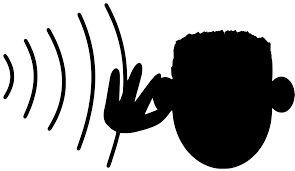Plenty of negative diseases and disorders exist in today’s society. They have developed from many factors including irregularities in body or brain development, or through external environmental factors. One example of a syndrome that has developed over time is known as misophonia. This is a rare disability that effects less than 1 percent of the world’s population. Because of this, people can often disregard how severe of an illness this is and fail to understand exactly how the person dealing with the syndrome is affected.
The more technology improves, the better medical personnel can comprehend how misophonia affects the body and begin to locate ways to treat or potentially cure the syndrome. Misophonia must be fully understood to understand the future of this life-stressing syndrome.
What is Misophonia?
If you’ve never heard of misophonia, misophonia is a sound and noise disorder that causes those who have it to be very sensitive to specific noises. The most common example used to clarify how sufferers feel is through imagining the sound of nails scratching across a chalkboard. This high-pitched scratching and screeching noise produces a particular known feeling causing your skin to crawl. This is the feeling that many people in the world feel multiple times a day.
The main difference, though, is anxiety, rage, depression, and panic often accompany this feeling with misophonia. Misophonia is not a condition to ignore or take lightly, as it is capable of leading people to the brink of insanity. Treatment of misophonia is important, as it can help plenty of people feel saner throughout their daily life.
Current Misophonia Treatment Options

With current technology and medical advances, we have been able to create many different potential forms of treatment for patients with misophonia. Their treatment and how effective they are solely related to how severe of a case the patient has and what their symptoms are like. The more severe they are, the more drastic of treatment that can be handled.
If someone has a less severe case, more moderate treatment can be put into place. For example, cognitive behavioral therapy combined with tinnitus retraining therapy and earplugs may be used for severe cases. For less severe cases, the occasional use of earplugs or noise-cancelling headphones might reduce symptoms significantly. It is important to talk to your physician about which treatments you’d benefit most from based on your history with misophonia.
Future Misophonia Treatment Options
Because technologies keep improving over time, doctors are becoming more and increasingly able to identify ways to reduce misophonia treatment. One of the future treatment options in the works includes the use of behind-ear sound projectors. This is thought to use calming noises. To train the brain to focus less on external influences without damaging hearing from constant music or earbud usage.
Another option for future treatment option is a little less common and currently in developmental stages. It is said that hypnosis may be able to cure symptoms of misophonia triggers when performed properly. Research is still being conducted regarding both methods of these future treatments, so keep on the lookout for more information about them!
Visit a Specialist for Help
If you’re dealing with an extreme case of misophonia and are looking for the best treatment solution for you, seek help immediately. Unsure of where exactly to begin? The Misophonia Cognitive Center is home to Steven Katz LCSW to help you through this condition. Here, we can diagnose you and get you into the treatment you need. Contact us today to start enjoying your life again!
